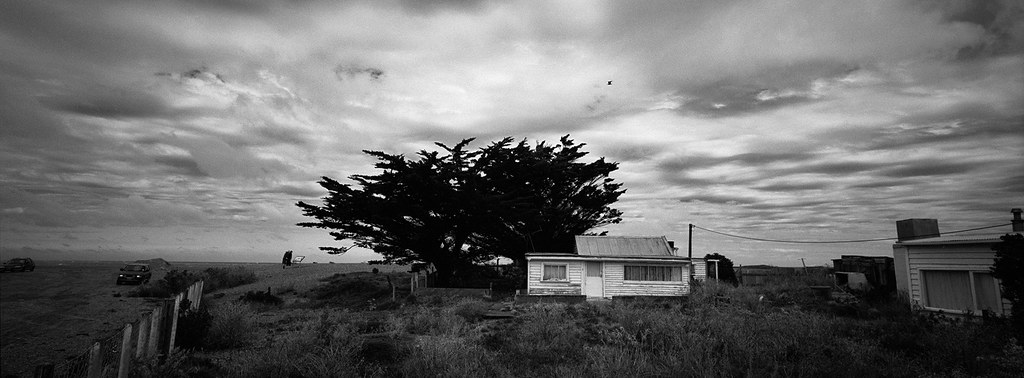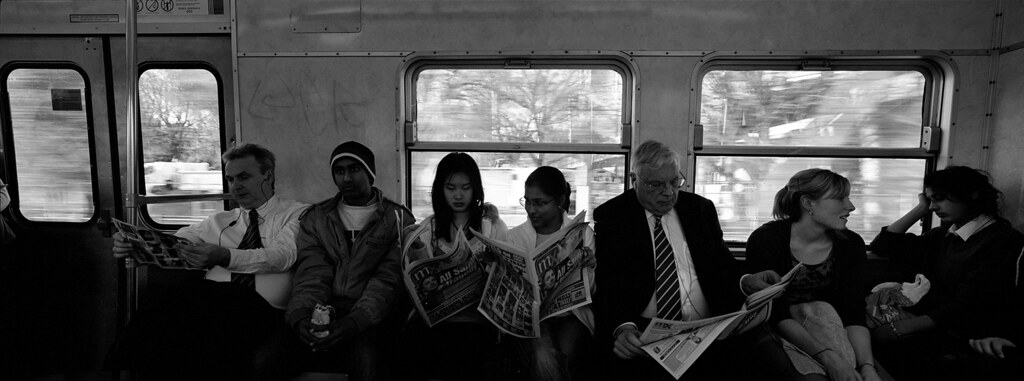A student reviewed a couple of my photos when I was exhibiting in Unsensored in 2009 and I recently found a copy of it and I thought I would share it. Unfortunately I don’t remember his name, nor can I find it online. Thanks, you.

The viewer is initially confronted with a scene of loneliness and depression in Matthew Joseph’s Bye Bye Birdie (fig. 2). This is communicated evoked / suggested through a cloudy background, derelict cottage, lone pine tree and a barren farming landscape in the midst of a drought. It is difficult to imagine the sweat and toil the farmer must endure in a barren landscape like this and it appears all the farmer’s hopes have been lost. A sense of depression also exists in the presumably isolated location of the subject, away from friends and all the opportunities that exist in a city area. Though this is initially unnoticeable, a close examination will reveal a couple wearing dark sombre clothes as if they were going to a funeral. The bird may symbolise the end of life in this bleak place and its ascent into a more peaceful existence in heaven.
Upon closer examination of this image, however, one may begin to discover that it is open to interpretation. It could also be imagined as a place to live in simplicity and retreat from the hustle and bustle of city life – to a place where the lack of city conveniences could lead one to reflect upon the meaning of life and of how tough times often strengthen a person. The farm and tiny home may be seen as a place that fosters feelings of resilience and a place where the family forms a close-knit community. A sense of mystery is revealed after analysing Bye Bye Birdie (fig. 2) for a period of time and it becomes difficult to know what to feel as you do not know what is going on inside the derelict cottage, leaving it open to interpretation.

Directly below Bye Bye Birdie (fig. 2) is a contrasting image by the same artist called Customers, not commuters (fig. 3). The hustle and bustle of the suburban train is a great contrast to the slow paced life portrayed in Bye Bye Birdie (fig. 2). The old-looking train interior appears very plain and boring. The photograph enables the viewer to imagine actually being on the train and enduring the severe rattling. It even creates a dizzy feeling. As in Bye Bye Birdie (fig. 2), a sense of mystery exists as the fast-paced nature of the train trip is enhanced through the blurred scenery outside the train window, making it difficult to know where the train is travelling through.
Unlike the desolation displayed in Bye Bye Birdie (fig. 2), however, a ‘colourful’ sense of life is present in the people travelling on the train. A wide variety of people from all walks of life is represented and includes people from various age groups, ethnic backgrounds and socio-economic statuses. There is some mystery surrounding the activities people may have done before the train trip or intend to do once they finish their journey (such as work, shopping, going home or other activities). A variety of activities are also occurring as the journey is underway, including listening to music, reading newspapers and having a conversation. A sense of mystery exists again in what the passengers are thinking and talking about. Feelings of both contentedness and suffering are associated with the overall image through the portrayal of people’s various moods. The interior of the train, itself, evokes a sense of unease through its dated interior.